I have used several Nikon D90 cameras at various times. In whatever conditions they were not: I constantly carried cameras with me in hikes, reinstalled lenses millions of times, in the rain, in the cold and on hot days - but the cameras worked like clockwork. Of course, I understand that good copies of Nikon D90 may have come across, but still, many years of trouble-free operation and mileage of over 130.000 (one hundred thirty thousand) of one copy and over 250.000 (a quarter of a million) of the second copy only gives rise to positive reviews.
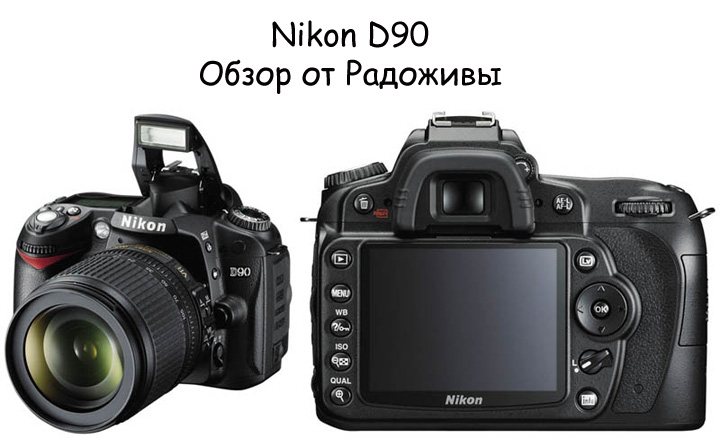
Review of the Nikon D90. View of the camera itself.
To fully understand and understand the camera, you just need read the instructionsIt’s long and boring, but I don’t see another way. The quality of the pictures very much depends on the lens and the methodology of your shooting, as well as image control mode, therefore, to say that the camera shoots better or worse is blasphemy, we can only talk about its ergonomics, technical characteristics and direct work experience. Always remember that important how to take pictures, but not by what means.
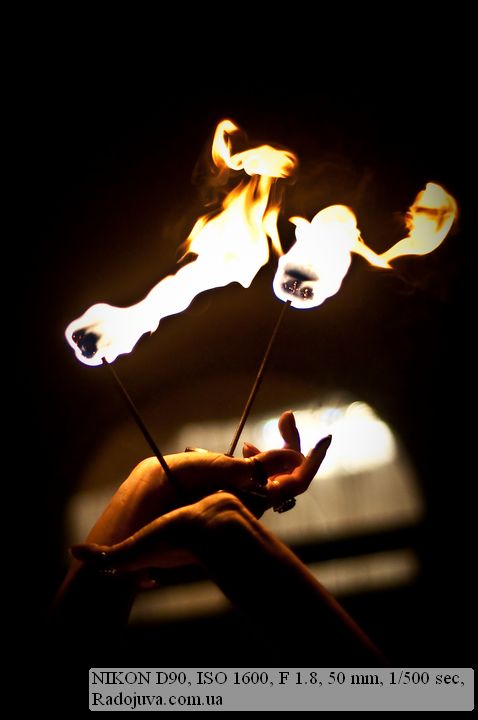
Sample photos on Nikon D90
And so, the camera belongs to the class of digital mirrors mid-range cameras... The Nikon D90 is often said to be an advanced amateur camera. Therefore, please note that this is not a professional camera, as they often write on the Internet (especially in online stores), professional cameras - is D300(s) D200, D700, D3(x, s), D4, D800(E) - therefore, you need to understand that the device is more aimed at amateurs than at professionals. The main feature of the camera is that the set of functions allows you to use the Nikon D90 just as well as professional technology, but with some limitations.
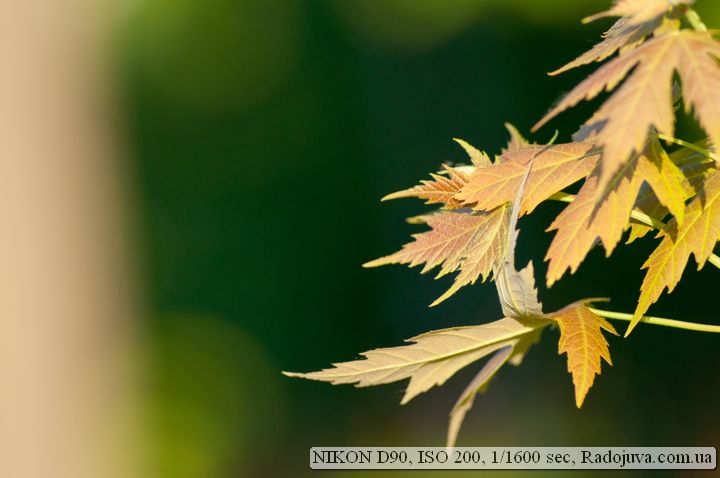
Sample photo on Nikon D90
The main parameters of Nikon D90, which are worth paying attention to
1. Live view
2. HD video 1280 * 720 24k \ s
3MP CMOS sensor
4. Aluminum-magnesium case with a bunch of buttons
5. Built-in autofocus drive
6. Additional screen
7. 4.5 frames \ second
8. Flash operating in Comand mode and FP mode
9. Lithium-ion battery
10. Matrix cleaning system
11. Bracketing exposure
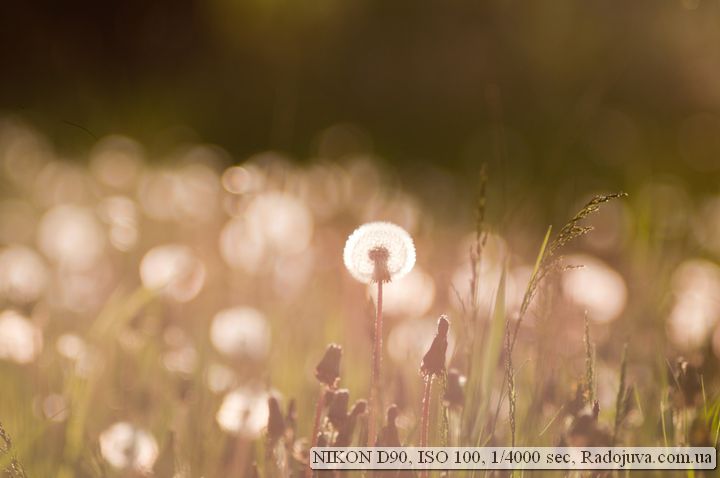
Example photo on Nikon D90
Now let's go through each item from a practical point of view.
1. Live View. Under live view it means “Live View” and in Nikon D90 it is quite a strong point.
First: made for the D90 very large screen (920.000 points - the same as in professional D3, D700) from which you can not tear yourself away. He even knows how to show slide shows to music!
Secondly: very convenient button to switch to live view - just clicked and the incomprehensible digital SLR turned into an ordinary soap box (useful for people who just switched to SLR cameras and just can't figure out what to see through the viewfinder).
Third: this mode allows clearly control focus at any point in your frame. Let’s take a closer look - when sighting you can select any area in the frame with the joystick and zoom it in on a scale of 1 to 1 - that is, select any point for focusing. This mode is indispensable when working with manual (non-autofocus lenses) and a tripod.
True, it takes time to get used to the work of the mirror, which adds unnecessary sounds and clinks when working. The mirror and shutter clicks when Live View is enabled, and when shooting, they click twice. It may seem that the camera is taking extra frames. A huge disadvantage of this mode is that autofocus works very, very slowly, and in video mode it does not work at all.
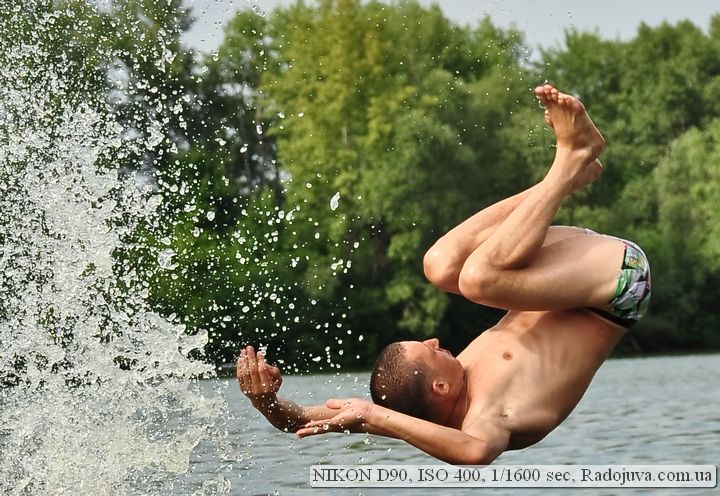
Photo on Nikon D90
2.HD video 1280 * 720 24k \ s without autofocus - absolutely unnecessary thing for a photographer
Why not necessary - because who will watch the video without autofocus? Okay, you can still take photos somehow in manual focus mode, but video with manual focus, when the scene changes at the speed of light, is a very difficult task. I recommend shooting video only with a tripod. A couple of times I shot a video with my hands - you can shoot, but again, it's very, very difficult. One more camera - Nikon D5000 - has video without autofocus.
The video itself is quite solid, in Motion JPEG format - which means that it “weighs” a lot. I advise you to immediately distill it into any of the popular formats after shooting - save a lot of disk space. Also, I advise you to block the exposure when shooting a video so that there are no tonal differences when changing the composition in the frame. Another serious problem with video is limiting the duration of the clip in 1280*720 up to 5 minutes. On the one hand, 5 minutes is quite enough to create short video selections, but I had to film my friend's performance once, and the 5 minute limit made the process very difficult. Also, after several 5-minute clips, the camera starts shooting clips up to 30 seconds long and turns off automatically, most likely due to the sensor overheating. The Nikon D90 is the first camera from Nikon with the ability to shoot video, so you shouldn't ask more of it. If you need a Nikon camera that shoots videos well and has automatic focus, then I advise you to look at the model Nikon D3100, Nikon D5100 и Nikon D7000.
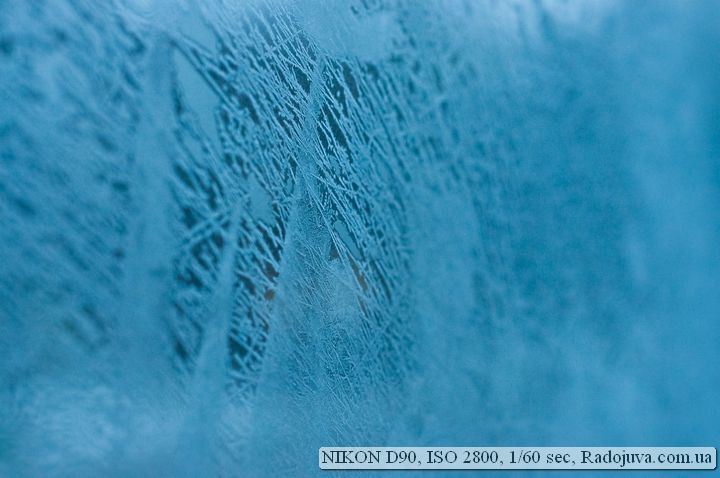
Photo on the Nikon D90. At high ISO.
3MP CMOS - just right
Why more? The more pixels - the higher the density and there may be more noise, due to the fact that the matrix cell is smaller and smaller - which means that it can catch less light. I advise you to read my article Battle of Megapixels.
The matrix is excellent. Of course, I already see noise at ISO 400, but at ISO 1600 they are still quite tolerant.
A very important point I noticed when working at high ISO, that the noise increases sharply after ISO 2500, that is, at ISO 2500 you can still squeeze something out, but then the quality of the photo drops dramatically. I recommend shooting at the proven ISO 200 and not raising ISO above 1600. ISO LO-1 (100) should be enabled only on a bright day, when you need to get some kind of portrait with an open aperture in order to keep within the shutter speed of 1 / 4000s. The values of ISO Hi1, Hi0.3, Hi0.7 are a kind of software wrapping of ISO, at such values it is practically impossible to get a low-noise picture.
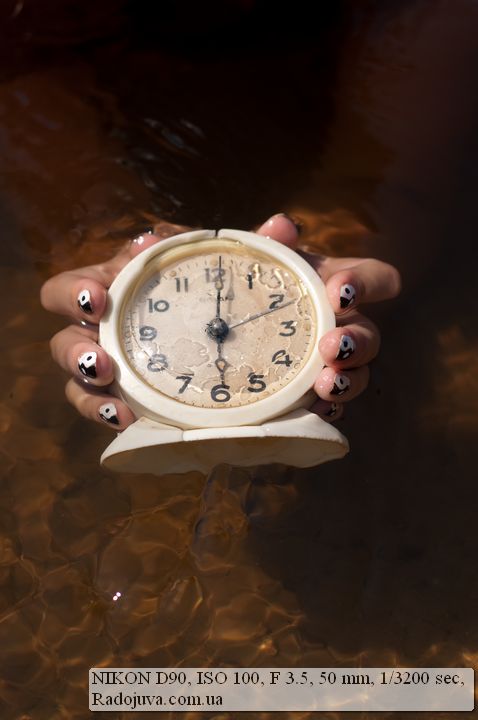
Sample photo on Nikon D90
4. Aluminum-magnesium housing (part)
In the introduction, I wrote that I constantly use, drag, ride with this camera and it feels quite adequately. Aluminum-magnesium alloy (although I did not find such information on the manufacturer’s website, but by weight, it’s not plastic) and one rubber insert, make the camera very practical, well-knocked down and provide excellent weight balance with different lenses. Perhaps for little hands it will be a little bit wrong, but for the serious hand of the photographer it’s just lovely.
On the body is a whole bunch of buttons. In the camera - the more the better. You can get quick access to all the basic functions and not scroll through the huge menu. I configured the programmable button to change the type of focus.
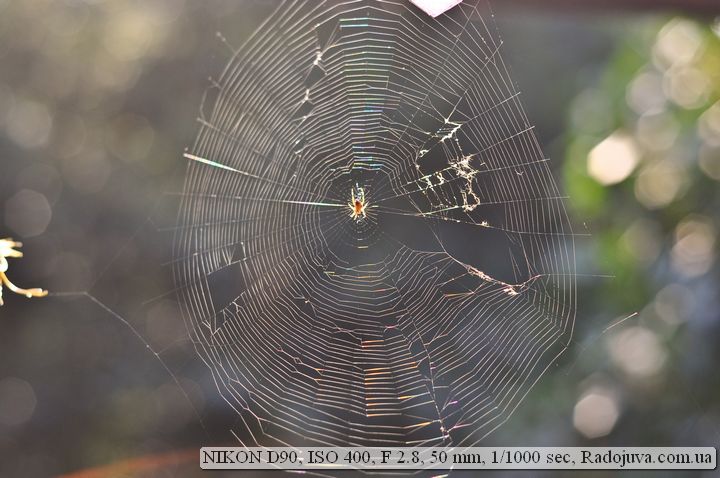
Wildlife Photo on Nikon D90
5. Built-in autofocus drive
A panacea for saving money and a panacea for professionals. The Nikon D90 camera has a built-in auto focus motor (screwdriver) for working with lenses marked AF. This allows you to use optics without a built-in focusing system (which means that you can use any autofocus lenses). Usually such optics are cheaper, for example, you can buy Nikon 50mm F1.8D AF for only $ 150 and feel like a real professional. Also, a huge portion of professional optics simply go without an auto focus motor. For example, there is simply no analogue for the Nikkor 135 DC with a built-in autofocus motor. More details about the compatibility of Nikon lenses in my article - Lens difference.
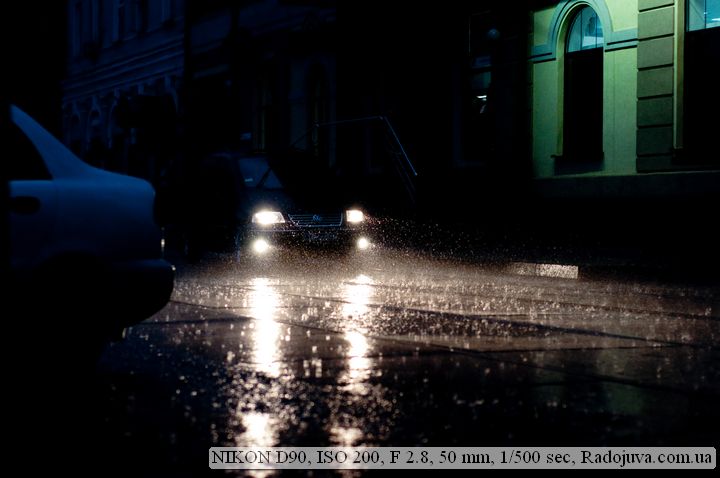
Photo on Nikon D90
6. Optional monochronous screen.
Recently I read on the Internet that the small monochrome display on the D90 is archaism, I was very surprised by this. In fact, it is not, the additional display is very good ergonomics and saves time, battery power, unnecessary movements. Let me explain - the display is always on top and you do not need to turn the camera upside down to look at the main display, secondly, it has a very high contrast in the sun (everything is visible), thirdly, it does not consume the battery (even the backlight mode of the additional screen uses a lot less charge than the main display). In general, the camera looks even more impressive with him. By the way - the backlight mode is turned on by turning the camera switch to the right. He himself then returns to its original position. Below is one of the most serious disadvantages associated with this lever.
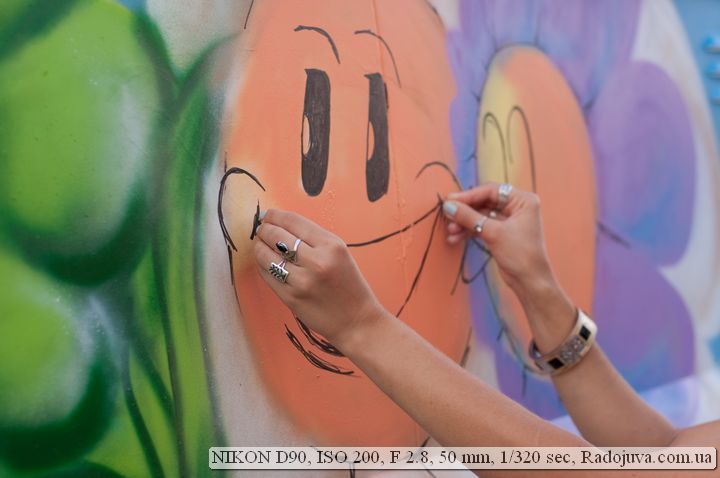
Photo on Nikon D90
7 - 4.5 frames / second
Someone can say, they say, stamps from Kenon are shot at 10 frames per second, the same D3 shoots 8 frames per second, but what can I say, D300 with a battery pack squeezes 8 frames per second. And now the question is - why do you need it? Burst shooting is very rare. 3 frames per second is already quite enough, the rest is only for specific tasks. Therefore, almost 5 frames per second is a pretty strong point. Conduct an experiment - at what speed can you press the camera button in the frame shooting mode? The same 5 times plus or minus will come out. In any case, the Nikon D90 has a higher rate of fire than the new, very expensive professional Nikon D800which can shoot at speeds up to 4 fps.
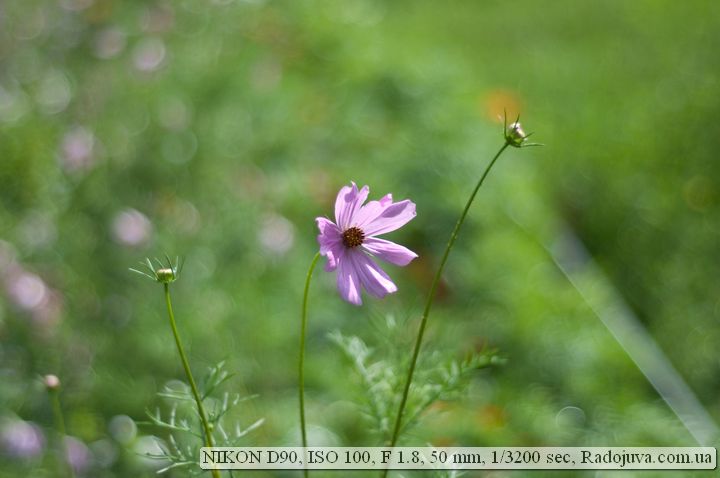
Sample photo on Nikon D90
8. Comand mode flash and FP support
Classics from Nikon. No need to buy expensive flash units or synchronizers - just go to the bracketing \ flash menu and select flash control mode C. Set the channel and group and control external flash units, such as SB-600, SB-700, SB-900, SB-800 и SB-910. Also do not forget that you can configure the built-in flash so that it gives only commands and does not take part in the shooting itself.
Then the most interesting - quick sync mode... With external flashes, you can set any shutter speed, up to 1/4000. Those who have not encountered such a problem will not understand; who knows, they will be glad. Few cameras support this mode. Why you need this, you can find, for example, in my article - 'flash in the afternoon '.
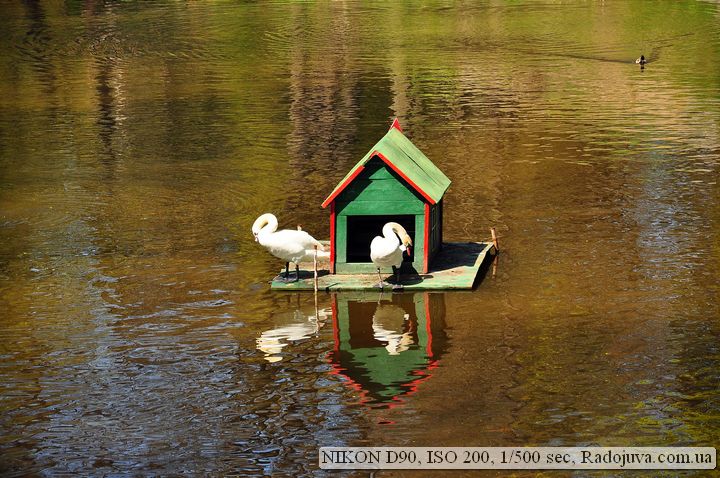
Sample photo on Nikon D90
9. Rechargeable Li-ion Battery EN-EL3e
Great armor-piercing battery. Also suitable for D700, D200, D300(s) etc. Withstands flash without over 2000 frames. The instructions say that it can provide work for 1200 shots, a third made with the flash - somewhere it is. The number of shots is greatly affected by the type of lens (e.g. VR mode), delay modes of the main display, etc.
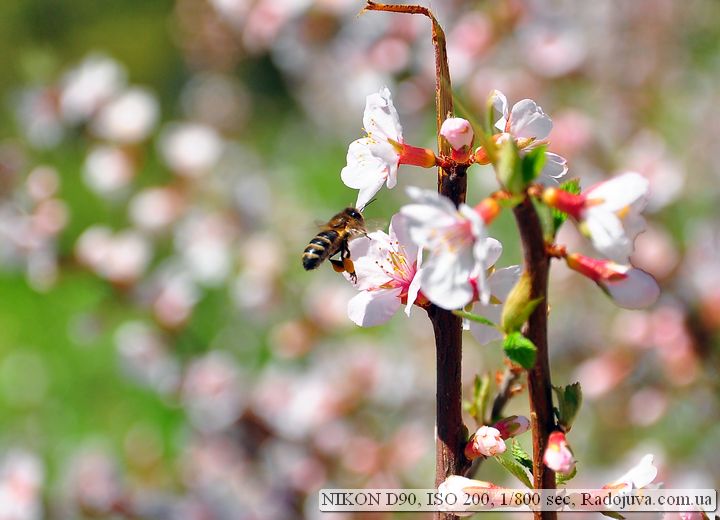
Sample photo on Nikon D90
10. Matrix cleaning system
A very useful thing. I recommend setting the cleaning when you turn off the camera, because when you turn it on, you often need to take pictures right away, and when you turn it off, let it clean for yourself. I advise you about cleaning the matrix read here.
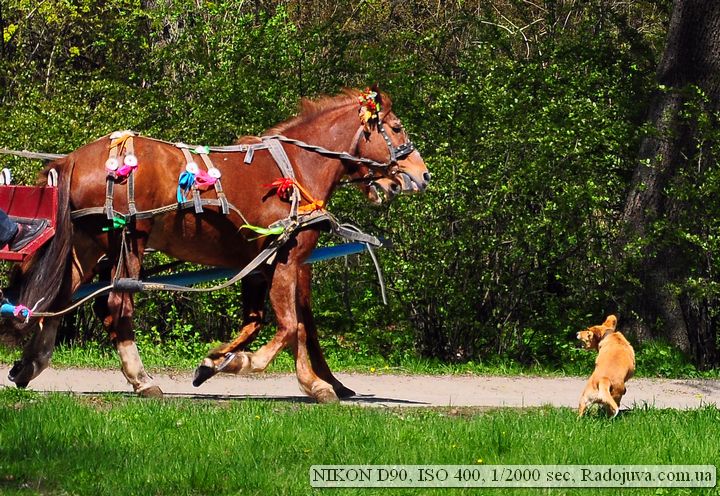
Sample photo on Nikon D90
11. Bracketing exposure
Bracketing allows you to shoot without fear for the correct exposure. True, this requires additional time, battery wear and fast filling of the memory card. It is under bracketing 4.5 frames per second are useful. I recommend not much use bracketing, it’s better to adjust the camera (especially the amendment exposure) and make one frame in RAW, and then, if anything, hold it out programmatically rather than slam the shutter on expo.
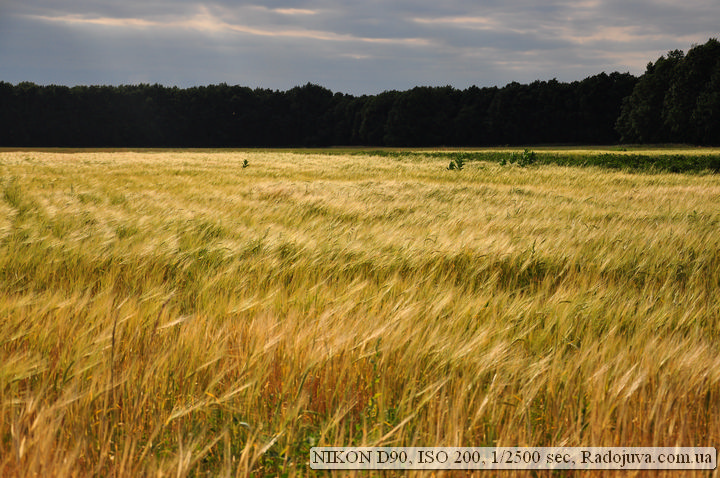
Nature photo on Nikon D90
I would like to note a number of huge advantages: wA wide range of functions to improve the picture - noise reduction functions, D-lighting etc.
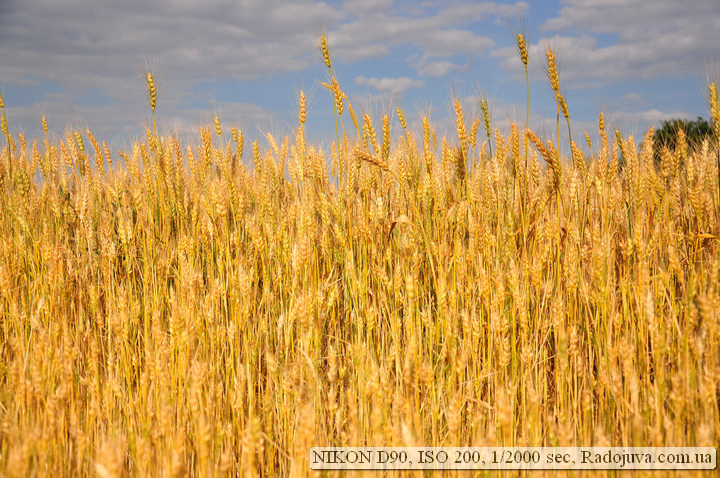
Nikon D90 photo
The disadvantages of the Nikon D90:
The strongest minus when working with the camera, I consider a strong return of the shutdown lever - that is, when you turn on the backlight of the additional screen, the lever moves back to the “ON” position, but its inertia is very strong and it goes further and turns off the camera (to the “OFF” position), therefore, you need to smoothly remove your finger after turning on the backlight of the additional screen. Very unpleasant stories are associated with this glitch, when at night, at important moments, the camera simply went out after setting the settings on the external display. Also, this switch is pretty loose, but it still works stably.
Also, after active work for a year, the rubber band, which is located to the right of the display, fell off, it expanded slightly and peeled off. I noticed that the rubber band covers the activity indicator of the memory card, that is, there is a fear of pushing the indicator deep into the camera and damaging it. The disease was treated by cutting off excess rubber and superglue. D90 got this disease from D200 and from D80. But, of course, I use my D90 camera a lot.
Exposure in 1/4000 second - if you haven’t understood yet, then when shooting with fast lenses starting with aperture of F / 1.8 and lower, you will miss the shutter speed, even at the lowest ISO.
Metering (exposure meter) does not work with non-chip lenses. It would be nothing, but this is just the camera and inferior to professional ones, such as D200 and older, almost any lens can be attached to them and the camera will operate in semi-automatic aperture priority mode or in good old manual mode. This really limits the operation of the camera with completely manual (without processor contacts) lenses, for example, Soviet ones - and you have to completely set all the settings “by eye”. Personally, I would very much like this function, since I am a fan of photographing with Soviet (and post-Soviet) optics.
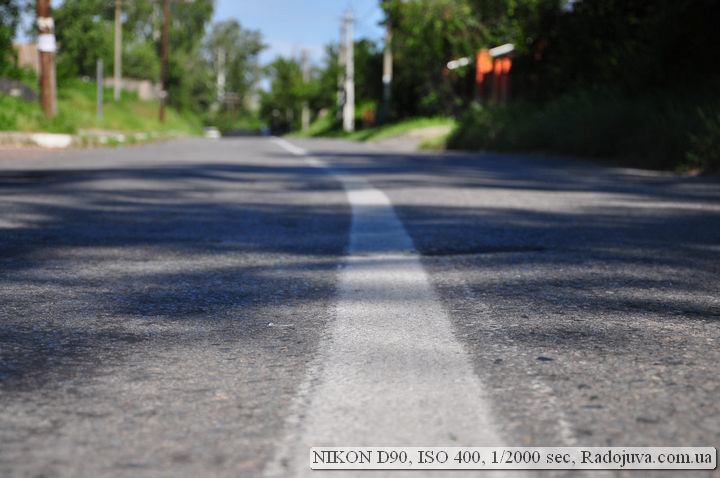
Photo on Nikon D90
For 3d tracking focus, there are not enough points (focus areas), and indeed, not enough focus points for such a solid camera.
No one wants depth of field view button imaged space. I use it very rarely, for example, in macro photography, but usually in 99% it is not needed. A funny thing that I advise you to check is to raise the flash and press the depth of field button (it’s located below, under the lens mount) and you will see that for a couple of seconds the flash works as a flashlight (using the strobe effect)
I consider one more unnecessary button \ property focus point lock button. It was useful to me only a couple of times, when I very strongly brought the camera to my face and accidentally pressed the joystick, thereby changing the focus point, in other cases, the point retains its position. It would be better instead of it to set the lever for changing the metering (as in older models), and so you have to press the top button near the external display and turn one of the selectors.
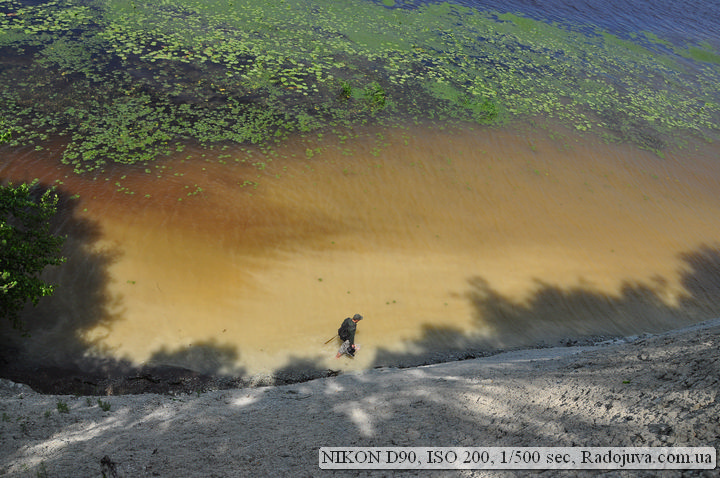
Photo at Nikon D90
Brief comparison with Nikon D80:
D90 is a descendant Nikon D80, which has an increased rate of fire, a different type of sensor (CMOS VS CCD), a central multi selector button is added, there is a Live View function and the ability to record video, and the display is also enlarged. Battery, menu navigation, ergonomics and other important functions remained the same. If you Nikon D80 I do not recommend upgrading the Nikon D90, as the main functions of the cameras are the same.
A brief comparison of Nikon 90 with D300, D300s:
D300, D300s Are professional cameras from Nikon, and the amateur D90 cannot compete with them. IN D300, D300s stronger body excerpt up to 1/8000, a professional camera control interface, high rate of fire and the ability to work with manual lenses, this is where the main differences end. I do not recommend overpaying for D300, D300s unless you have to shoot 1000 frames every day.
A brief comparison of Nikon 90 with D7000:
D7000 surpasses even the Nikon D300 in a number of parameters, D300s, and especially Nikon D90, because as an upgrade I recommend only Nikon D7000 or already ff Nikon D700, D600, D800.

Photo at Nikon D90
Fit in the Nikon D90 Camera I think control with infrared remote Nikon ML-L3It costs a penny, and gives a lot of opportunities.
Attention: The final result of the image in the photograph depends very much on a large number of factors and the camera does not play the first role in this quantity, therefore, when photographing, remember - important how to take pictures, and don't try hard to find the best camera.
Sample Photos
The photos in the gallery below were shot on a budget lens Yongnuo 35mm f / 2 (model YN35mm F2N for Nikon cameras) and shown without treatment. Part of the photos is the conversion of the source RAW files by the original Nikon ViewNX-i utility without any additional adjustments, the other part is the original on-camera JPEG.
Download source files in format JPEG can at this link (114 files in the '.JPG' format, 735 MB).
More examples of photos, as well as source files, can be found in the reviews:
- YONGNUO LENS YN50mm F1.4N E
- Nikon DX AF-S Nikkor 18-55mm 1: 3.5-5.6GII ED SWM Aspherical
- Nikon N AF-S Nikkor 58mm 1: 1.4G Nano Crystal Coat SWM Aspherical
- YONGNUO 50mm 1: 1.8 (YN50mm F1.8N)
- Tokina VCM-S AT-X PRO SD 70-200 F4 (IF) FX N / AIS
- Nikon AF Nikkor 28mm 1: 2.8 (MKI)
- Tokina AT-X 80-400mm 1: 4.5-5.6 (AT-X 840 AF-II)
- Nikon AF Nikkor 20mm 1: 2.8D
- Tamron PZD Di 28-300mm F / 3.5-6.3 Piezo Drive VC Model A010
- Nikon Zoom-NIKKOR 80-200mm 1: 4.5 (AI, MKII)
- SIGMA ZOOM 28-105mm D 1: 2.8-4 DG
- Nikon AF Nikkor 28-70mm 1: 3.5-4.5 (MKI)
- Sigma 135-400mm 1: 4.5-5.6 D APO
- Tokina SD 24-70 F2.8 (IF) FX AT-X PRO Aspherical
- Nikon AF Micro Nikkor 105mm 1: 2.8 (MKI)
- Tamron 16-300mm F / 3.5-6.3 Di II PZD VC Model B016
- Tokina 107 Fisheye 10-17mm F3.5-4.5 DX AT-X Internal Focus
- INDUSTRAR 22U-1 1: 3,5 F = 50mm P
- LOMO RO501-1 F = 100 1: 2
- Nikon ED AF Nikkor 80-200mm 1: 2.8 (MKI)
- LOMO RO500-1 F = 90 1: 2
- Tokina AT-X PRO AF 28-70mm 1: 2.6-2.8 (Tokina AT-X 270 AF PRO)
- Nikon Lens Series E Zoom 75-150mm 1: 3.5 (MKII)
- Sigma DC 17-70mm 1: 2.8-4.5 MACRO HSM
- Tokina AT-X PRO SD 11-20 F2.8 (IF) DX ASPHERICAL
- SIGMA ZOOM 55-200mm 1: 4-5.6 DC HSM
- TAIR-3 4,5 / 300A
- Nikon DX AF-S Nikkor 55-200mm 1: 4-5.6GII ED VR II
- QUANTARAY TECH-10 NF AF MULTI-COATED 1: 4-5.6 f = 75-300mm
- Nikon NIKKOR-SC Auto 1: 1.2 f = 55mm
- Sigma DC 18-50mm 1: 2.8 EX MACRO HSM
- Tamron AF Aspherical 28-80mm 1: 3.5-5.6 177D
- Quantaray 70-300mm 1: 4-5.6 D LDO MACRO for Nikon AF, MACRO (200-300)
- SIGMA ZOOM 28-200mmD 1: 3.8-5.6 UC Aspherical
- Quantaray 70-300mm 1: 4-5.6 D LDO MACRO for Nikon AF
- MC PANCOLAR 1,8 / 50 CARL ZEISS JENA DDR
- YONGNUO 40mm 1: 2.8 (YN40mm F2.8N)
- Sigma 70-300mm D 1: 4-5.6 APO DG
- TOKINA AF 70-210 1: 4-5.6
- Sigma 70-300mm 1: 4-5.6 D DL MACRO SUPER
- Quantaray for Nikon AF 28-300mm 1: 3.5-6.3 LDO Multi-Coated (28-300mmD Ashperical IF)
- SIGMA ZOOM 28-300mm 1: 3.5-6.3 DG MACRO
- YONGNUO LENS YN 14mm F 2.8 N
- Tamron AF Tele-Macro 70-210mm 1: 4-5.6 158DN
- I-26m-U 2,8 / 52
- Sigma Zoom DC 18-200mm 1: 3.5-6.3 II HSM OS
- Yongnuo YN 85mm F1.8N
- INDUSTRAR 22U-1 1: 3,5 F = 50mm P
- SIGMA ZOOM 18-50mm 1: 2.8 EX DC (D)
- Nikon IX-NIKKOR 60-180mm 1: 4-5.6
- YONGNUO LENS 100mm 1: 2 (YN100mm F2N, for Nikon)
- PROMASTER DIGITAL XR EDO AF Aspherical LD (IF) 18-200mm 1: 3.5-6.3 Macro
- Tamron Di II SP 17-50mm F / 2.8 VC
- MC HELIOS-44M-4 58mm 1: 2
- YONGNUO 35mm 1: 2 (YN35mm F2N)
- Sigma DC 17-70mm 1: 2.8-4.5
- Nikon ED AF-S Nikkor 300mm 1: 4D IF Silent Wave Motor
- Yongnuo YN60mm F2NE MF MACRO
Prices for modern Nikon cameras in popular stores can look at this link.
Video review, retrospective
Comments on this post do not require registration. Anyone can leave a comment.
Conclusions:
In general, the Nikon D90 camera is simply lovely, a wide range of functions will allow both professional and amateur to work. The speed of work and the quality of the picture are very pleasing.
Material prepared Arkady Shapoval.





































Please, tell me where else to look at the photos of the D90 and D300 standing next to each other? D90 liked the size. And d300, as I understand it, is the same "brick" as 200?
Are you buying a photo camera by size ??? :) :) :) then take a closer look at the technology of the beginning of the 20th century, it is big and strong :).
What is the price of the lens on the Nikon D90 ?? Ukraine
Please tell me, right now I am facing the standard choice of canon 650, nikon d90, d5100. I plan to take pictures of the sea, landscapes, portraits, various journeys. I have a little 3d for a friend, then I don’t have a lot of mirrors, but I plan to learn and grow. What will you advise?
And tell me, what kind of expression is this moronic, and who invented it at all !? “MORALLY OUTDATE MODEL” (for example d90). Who measures this morality and what is interesting !? probably marketers and came up with by and large, to start buying new items!
Vladimir, read the forums, look in the phraseological dictionary. Well, Christmas trees, why are you asking questions that are difficult to name even “on the topic” ??? Well, if you do not like the idiom "morally obsolete" - do not use it. Everyone has their own attitude to technology and their own priorities.
Good afternoon, Arkady, thanks again for your project, I take 90% of everything from here. Arkady, please tell me, just recently on one forum I came across information - .... QUOTE “At least on the D5000 there is no button for“ previewing ”the frame WITHOUT actually photographing. To put it simply, I set a shutter speed / aperture pair, pressed the button and you can see in the viewfinder whether it is overexposed or not. It is NOT NECESSARY to consume the resource of the matrix, card and shutter. " QUOTE….
It was about D90, I rummaged through all the instructions, and did not find anything like it, I don’t know, maybe I was looking badly, or what I didn’t understand ...
Where this function is hidden, and how to use it, a really internal exposure meter paired with a whale 18-105 is often mistaken, especially in winter.
(on my old Kenon, a soap dish, there was a live Histogram, I got used to it very much, and this was the only way I got good photos, (then it turned out without it, by sight)), as I understand it, it's not here ?! the PREVIEW function (without the shutter release) would be very helpful, I think to start learning ...
THANK YOU!
The depth of field preview button is located below the bayonet mount, it is difficult to notice.
Thank you .... we'll see in the evening ....!
Arkady, can you clarify what exactly I should see in the eyepiece, when the button is pressed. except for a click similar to the shutter release, and the shutter speed indicator in the eyepiece fades, and NOTHING more .... and where is this depth ??
THANKS ...
Arkady thanks ... the answer has been found, the question has been removed ...
ps. I won’t see anything special there (first) then maybe))))
Hello Arkady. I want to appeal to you with such a request. On June 7th I purchased a nikon d90, with a lens 18-105vr. The next day I found that there was a little noise when shaking the lens itself. Tell me, is it a marriage, or is this the norm ? Can go and change, before it's too late ?! Your opinion is important to me!
Good evening!
Nikkor DX 55-300mm f / 4.5-5.6G ED VR AF-S lens is suitable for this camera.
Arkady tell me please, is it worth taking this device if it has a mileage of 97934 ???
Hello Arkady! You wrote that you had two D90 cameras. I am very interested in the question: is the quality of the copy made in Japan different from the Thai counterpart?
I did not notice the differences.
Question from the kettle. Does it make sense to initially take Nikon 7000 with the cheapest lens? In the future, the carcass will not be updated for about a year. Or initially buy a Nikon 90D and several lenses. I ACKNOWLEDGERLY, THE MIRROR HAS NEVER BEEN REMAINED IN THE HANDS, BUT I HAVE A DESIRE TO LEARN.
Waiting for your advice!
If your arclites are always this helpful, “I'll be back.”
Say, be affectionate.
A camera is more beautiful than kupuvati:
d90 chi d3200?
Yaka in them suttva rіznitsya?
Crazy. :)
Here - https://radojuva.com.ua/2013/01/what-camera-nikon-shoud-i-buy/
Your advice is really needed ... There is a d90 and 50 / 1,4 I shoot mainly children, I need a lens with good sharpness and aperture to shoot indoors, well, so that it smears beautifully) what do you recommend?
take 35 / 1,8G it is wide enough to take the company indoors, but not too much distortion to completely disfigure portrait shots. There is a review of the tut.
Or dig and take tamron 17-55 / 2,8, one of the most common inexpensive reporters with good aperture (note that they are available both under nikon and under canon)
say please i bought a camera d 90 nikon and on the display bi le spot
Hello Arkady! You write excellent articles that helped me a lot, I have never worked with cameras above a simple soap box, and my beloved bought the D90, I want to ask where to start studying, because in the future I want to work in this area) can I learn from it and what is needed understand first?
Yes, of course you can study and even work on the D90. To get started, you can look at the articles from the "main" section https://radojuva.com.ua/o-fotografii/ , and then everyone will understand where to look.
Your advice is really needed ... There is a d90 and 50 / 1,4 I shoot mainly children, I need a lens with good sharpness and aperture to shoot indoors, well, so that it smears beautifully) what do you recommend?
I look towards 35 1.8
or take 18-105 and not steamed?
Good evening, Arkady. Please help with a choice. I have an irresistible desire to acquire the Central Control Commission. I choose between D90 and D5100. I shot on various digital cameras, I have an ultrasound from Canon, in Soviet times I shot for a long time on the FED. I will shoot children, landscapes. Manual settings are not a problem for me. The D5100 likes everything except the prospect of tuning in the menu, the D90 captivates with the buttons and the main one with a screwdriver, but the mrdel is quite old. What do you advise?
if weight (lightness) is important and not very often a video - take 3100. a comfortable baby, but some things are “through the menu”. And it is also the cheapest, with the SAME pictures on all the models listed below).
if it is important to quickly set up everything, and the extra 200 g of weight is not a hindrance to you (plus) - take the D90 (although at high ISO it is noisier both 3100 and 5100)
IF and ONLY if video or “removal from the belly” is important to you, take the 5100. But due to the removal of the buttons on the left a few “through the ass” it becomes ergonomics, it is inconvenient to quickly adjust. This is a semi-photo-semi-video machine.
Good evening, Arkady. Thank you so much for your articles. Help a lot. I have a D90, than it’s better to handle it. C LR is a problem, noise is climbing, dirty colors in the shadows are obtained, etc. With Canon 50d there are no such problems in LR. What do you advise?
Hello! Please tell me which set of lenses it is desirable to have on the Nikon D90 for shooting portraits (mainly on the street or indoors)?
I have:
Nikon 50 f / 1.8D AF Nikkor
Nikon 18-55mm f3.5-5.6G AF-S VR DX NIKKOR
Nikon 55-200 f / 4-5.6G IF-ED AF-S DX VR Zoom-Nikkor
Helios 77-m4 50 mm at 1.8
What would you recommend to buy or replace?
Nikon 50 f / 1.8D AF Nikkor will be just right.
I already have Nikon 50 f / 1.8D AF Nikkor - I wrote, it is the first on the list in my post :)
Or did you mean 1.4?
Does it make sense to take the Nikon AF Nikkor 85mm f / 1.8D?
hello, Arkady ... I already wrote to you about the Pentax k30 review ... today I was in a nearby town ... I went around all the shops of photographic equipment ... strange thing - the one-sidedness in the offers is simply discouraging ... Nikon - Canon ... somewhere a little “diluted Soni ... suddenly I saw Nikon d90 ... new, 29000 ... how is it with back-front focus? ... lens 18-105 ... do you have experience ... thanks ... I will look here ...
Hello Arkady. Your advice is very necessary!
I am an aspiring amateur photographer, and I bought the first Canon SLR camera, the EOS 550D, and saw your review on the NIKON D90 camera and it seemed (probably it is) the nikon d90 is better than my CANON EOS 550D DSLR. Until recently, I did not distinguish between prof. amateur SLRs, and most recently I remembered that in the store where I took my camera the same price was nikon d90 with my camera. And I am slightly disappointed in my choice, and therefore I want to ask your advice. I really made the wrong choice?
I will really wait for your reply.
550d is a good camera, for starters it will be just right. There is no bad choice, there is an inability to use the camera.
So for a novice photographer, that is, for me this is not a bad choice?
And how did I hear the most important thing is the lens? Is this really so? What advise lens? I was offered this Canon EF 24-105mm f / 4L IS USM, but when I saw its price, I got scared! For me, this price is almost not realized for the coming year. Can you please explain what kind of lens it is, why and for whom it is, and what are the differences from the standard 18-55 lens? I just want to hear the advice of a professional. And can you please advise a good lens already for a purchase within $ 400-480
Canon EF 24-105mm f / 4L IS USM is a professional stock lens for full-frame cameras, it has better aperture, design, all for 18-55 (except for price and weight :)). First, look towards canon 50 1.4, the easiest way to start with fifty dollars is to get used to high-quality optics. If you do not understand the concepts, you first need to master the basic terms, and therefore already choose. Lots of useful information here https://radojuva.com.ua/o-fotografii/ (for you the General section), I strongly recommend reading about the difference between lenses here - https://radojuva.com.ua/2012/04/kind-of-lens/
I read and understood all the notations and terms, the lens also looked)) Now can you please tell the teapot how the L series lenses differ from ordinary lenses?
What exactly is the feature of Professional lenses)) is just terribly interesting)
Good afternoon Arkady. I buy the first DSLR and I want you to advise which camera is better to take: Nikon d90 + 18-105VR or Canon 650d + 18-55kit. Nikon interested in a larger matrix and kenon megapixels. What should I do?
Good evening . I would like to consult with you on the choice of camera. I am considering two cameras, the first is the Nikon d90, and the second is the Nikon d5200. I understand that cameras belong to different classes and to different eras of photo development. The old d90 is a proven unit with an outdated filling, and the d5200 baby has a fairly modern and even advanced filling (which is what the autofocus module costs him from the d7000). As for the tactile sensations from d90 out of competition. But the strongest deterrent in choosing the d90 is its outdated filling, no matter how the camera (if I'm not mistaken) in 2010.
What would you advise me? what to give preference to?
Thank you)
what does the autofocus module cost him from the d7000
____
Do you know that the d7000 has huge problems with AF? I changed 2 pieces of d7000, everyone had problems with autofocus, everyone focuses on where they need to, and the background is in focus (it's the carcass itself). Both cameras were returned to the store, and after quality checks, defects were confirmed.
After that I bought a d90, and it seems to me that this perfect camera, autofocus misses zero, the photos are excellent. Some write that LV is slow, but I can say that this mode works at exactly the same speed as the d7000. Of course, you decide. Read other forums, many complain about the incorrect operation of the AF, although there is not a single dissatisfied review about the AF about d90.
Irina, thank you for the information, I admit honestly I have never encountered reviews about the incorrect operation of the AFs of the d7000 and d5200. I myself am inclined to d90 and most likely I’ll take it, the device inspires confidence with its solidity))
As for the d7000 dampness, I can not agree, this is a pretty good camera, well, of course, not without its drawbacks. Yes and no in the market, an ideal camera in every way. D90, the tested unit agrees, old and reliable, and as far as I know it has not even been discontinued (at least it still weighs on the manufacturer’s website)
And, buying with my hands, this is not mine))) I want a new one, my own and only my device))
bought ... by chance I saw in one of the stores ... for our places such a camera is a rarity ... usually there is consumer goods, on which the eye does not stop ... not so cheap ... 30000 with a card ... SDHC for 8 GB ... plus a loan for a year 8000 ... otherwise it doesn’t work ... not a single “hot” or “broken” pixel was found ... back-front - everything is fine ... however, kit 18-55 ... for now it's enough ... autofocus is lethal ... even in bad conditions ... question to Arkady ... how should the cleaning mechanism sound matrices? ... only at home, in silence, it seems like you hear "zz", "zz" ... when I turn on "clean now" - in a second or two, "ready" appears ...
Well, there are so many dots for a fig? Thoughts jump? Or an understatement in every phrase ...
Stirlitz pondered every phrase ... the truth was somewhere nearby ... but ... the thought was constantly slipping away ... it never came into my hands ...
you, for an hour, did not beguiled the blog? ...
Arkady, I would have banned. For life.